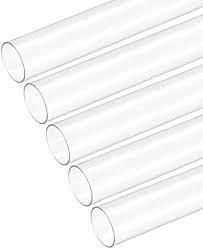Nov . 17, 2024 02:59 Back to list
Exploring the Benefits and Applications of PE Pipe Fittings in Modern Plumbing Systems
Understanding PE Pipe Fittings An Overview
Polyethylene (PE) pipe fittings have gained significant popularity in various industries due to their versatility, durability, and cost-effectiveness. These fittings are essential components in piping systems, ensuring reliable connections between pipes and contributing to the overall efficiency of fluid and gas transportation. This article delves into the characteristics, types, applications, and benefits of PE pipe fittings.
Characteristics of PE Pipe Fittings
PE pipe fittings are crafted from high-density polyethylene (HDPE) or medium-density polyethylene (MDPE), making them resistant to a wide range of chemicals and environmental conditions. These materials provide excellent stress crack resistance and toughness, which is crucial for maintaining integrity over time. The fittings are lightweight yet strong, making them easy to handle and install.
One of the most appealing features of PE pipe fittings is their flexibility. This allows for easy bending and installation in areas with constraints, reducing the need for additional fittings and joints. Moreover, PE fittings are designed to withstand extreme temperatures ranging from -40°C to +60°C, making them suitable for diverse applications.
Types of PE Pipe Fittings
There are several types of PE pipe fittings, each serving a specific purpose
1. Elbows These fittings allow for change in direction within a piping system, available in various angles such as 45° and 90°.
pe pipe fittings

3. Reducers These fittings are used to connect pipes of different diameters, allowing for transitions in fluid flow without causing turbulence.
4. End Caps End caps serve to close the ends of pipes, effectively sealing the system and preventing leaks.
5. Couplings Couplings are designed to join two pipes together, providing a secure connection while allowing for some level of movement.
6. Flanges Flanged fittings are utilized for connecting pipes to other equipment, facilitating easy installation and maintenance.
Applications of PE Pipe Fittings
PE pipe fittings are used extensively across various industries. In agriculture, they are employed for irrigation systems, ensuring efficient water distribution. In the construction sector, these fittings facilitate water supply and drainage systems. Moreover, the natural gas distribution networks frequently utilize PE fittings due to their resistance to corrosion and ability to handle gas safely.
Benefits of Using PE Pipe Fittings
The advantages of PE pipe fittings are numerous. Their lightweight nature simplifies transportation and installation, while their durability translates to lower maintenance costs. The resistance to corrosion ensures a longer lifespan, minimizing the need for replacements. Additionally, the flexibility of PE allows for innovative designs in piping systems, reducing the overall material costs.
In conclusion, PE pipe fittings play a crucial role in modern piping systems across various sectors. Their durability, versatility, and cost-effectiveness make them an ideal choice for engineers and contractors. Understanding the types and applications of these fittings helps in making informed decisions for efficient fluid and gas transportation projects. Whether in agriculture, construction, or industrial settings, PE pipe fittings continue to be a vital component that enhances the overall functionality and reliability of piping systems.
-
High-Quality PPR Pipes and Fittings Durable ERA PPR & PVC PPR Solutions
NewsJul.08,2025
-
Black HDPE Cutting Board - Durable, Non-Porous & Food Safe HDPE Plastic Cutting Board
NewsJul.08,2025
-
High-Quality CPVC Panel Durable HDPE & PVC Panels Supplier
NewsJul.08,2025
-
Double PE Welding Rod Supplier - High Strength, Durable & Versatile Welding Solutions
NewsJul.07,2025
-
High-Quality PVC-O Pipe Supplier Durable 75mm PVC Pipe & Connections Leading PVC Pipe Company
NewsJul.07,2025
-
HDPE Drainage Pipe Supplier – Durable & Corrosion-Resistant Solutions
NewsJul.06,2025

